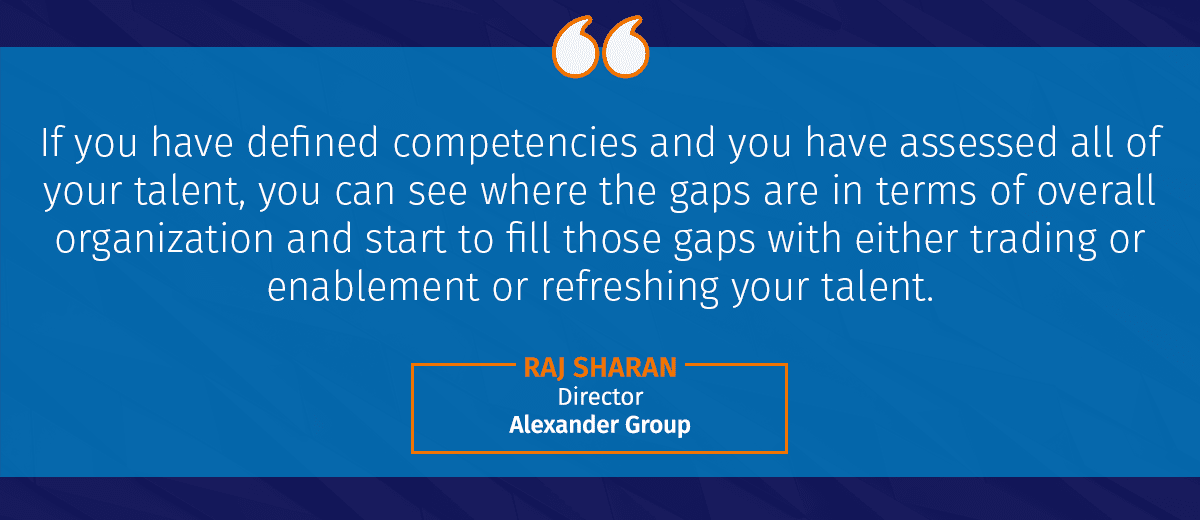Built-to-Last: How Life Sciences Companies Focus on Talent


Support talent management and provide opportunity for employees.

How do organizations create space for change in talent management practices? How do Life Sciences companies attract new and competitive talent while continuing to engage long term employees? How do they identify the gaps and opportunities that they might be missing?
Sean Higgins and Raj Sharan, directors for the Alexander Group Life Sciences practice, recently discussed the new and contemporary ways that organizations are competing for talent through career pathways and enhanced employee experiences.
Building a Path for Opportunity
While total compensation is still an important part of the package for any job seeker, the next generation of sellers is very interested in career growth opportunities. Organizations typically have existing frameworks that map out the architecture of their job opportunities. But without a clear path forward, employees can easily become disengaged. To remedy this, leading companies build out a very detailed career framework that starts with entry level roles.
For example, a sales organization hires sales development representatives right out of college or with one or two years of experience, but there are different paths that an entry level employee can take. They could move into an inside sales role, become a generalist in field sales, or specialize in product. They also could decide to become a field application scientist or application engineer, and the higher they go, the more levels of management may be involved. While these different career paths may have already existed, clearly identifying the different options that are available to any new seller candidates or pre-existing sellers looking to move to the next level of their career is a valuable tool for recruitment and retainment.
Communicate the Details
Another part of the approach that companies are taking is to create meticulously detailed job profiles that set clear expectations for jobseekers and employees looking to be promoted. These include defining what the levels of the role, the expectations of that role, how responsibilities change as someone moves through levels of that role, and additional opportunities for promotion when an employee reaches the highest level. Instead of a laundry list of skills in a job description, leading companies focus on the top three to five skills in each role. This helps HR professionals identify the right talent during the interview process and determine the right fit for existing employees by highlighting the skills, expectations and competencies necessary for the position.
Identify the Gaps
After building a job architecture framework and creating detailed job profiles, identifying the gaps and competencies in the company’s workforce is the natural next step. Proactively investing in training and evaluating talent on a regular basis is key, as is a heavy emphasis on onboarding training for new employees. Large companies are moving quickly through the hiring process largely due to the current demands for talent. They need to keep the initial level of engagement and excitement going, which means that conversations regarding value proposition, market specialties and current trends start during their onboarding training and continue to develop as the new employee progresses.
Revamping employee training and evaluation also engages long-term employees. An annual exercise at minimum that assesses the competencies of sellers helps companies identify if they need new talent, but it can also create opportunities for existing employees to move vertically or horizontally within the organization.
Embrace Your Strengths
Many organizations have transitioned to an account management model of selling over the past few years with a single point of contact across the customer continuum. As an example, a highly technical instrument seller may now have the responsibility to sell the entire portfolio, including consumables or smaller instruments. This can end up in a situation where they may feel demoralized, being unable to focus on the grander solutions that meet their quota.
From a change management perspective, repositioning sellers who have vast experience and understanding of the company’s complex solutions and/or in-depth industry knowledge in areas like pharma or academia can showcase their skills while keeping them engaged. Providing a platform to share their science expertise through webinars or in-person speaking engagements can give them a sense of community and belonging, which motivates them to further excel.
Lucrative packages and equity matter but giving employees a sense of stability and consistency while providing a way forward to thrive in their careers is key. For more information on how you can build a path to success, please contact an Alexander Group Life Sciences and Analytical Instruments practice lead.
_________________________________________________________
Recommended Insights:
Article: The Digital Journey: Steps and Phases for Life Sciences
Life Sciences and Analytical Instruments Industry Trends Study Briefing